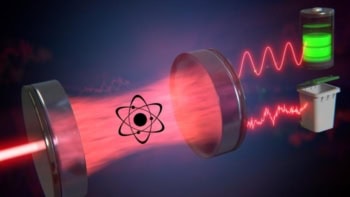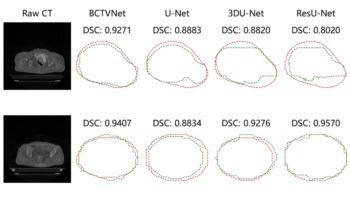The Poincaré Conjecture: In Search of the Shape of the Universe
Donal O'Shea
2007 Allen Lane
304pp £17.99/$26.95 hb

The public’s view of the mathematician as a reclusive genius toiling away for years at an arcane problem is one that will not go away. The media have enthusiastically seized on this image since the depictions of Andrew Wiles in Simon Singh’s best-seller Fermat’s Last Theorem and John Nash in the film A Beautiful Mind. Last summer in Madrid it surfaced again in the form of Grigori Perelman and the Poincaré conjecture. Not that Perelman was in Madrid – that was exactly the point.
The occasion was the award of the Fields medals, the mathematicians’ equivalent of the Nobel prizes. King Juan Carlos was centre stage, flanked by political and mathematical dignitaries, as an audience of thousands strained to identify the dark-suited young men at the front waiting to receive the four medals. The second name to be announced was that of Perelman, “for his contributions to geometry and his revolutionary insights into the analytical and geometric structure of the Ricci flow”.
“I deeply regret”, the announcer continued, “that Dr Perelman has declined to accept the Fields medal”. Where was Perelman? Presumably he was back in his apartment in St Petersburg, working hard on the next challenging problem.
The events leading up to this point form the subject of this book by Donal O’Shea, a mathematician at Mount Holyoke College, Massachusetts. It would be impossible to describe the step-by-step evolution of Perelman’s result. What might his diary say? “Morning: proved A implies B; afternoon: B implies C; evening: found a counterexample to A.” So instead the author gives a broad history of this area of mathematics, tailored to culminate with the famous conjecture that states that “a simply connected three-dimensional manifold is homeomorphic to the sphere”.
Therein lies the challenge for the author: to explain both the concepts and the history for a general readership in the manner of Singh’s successful book on Wiles and Fermat. While Singh’s task was to explain number theory to the layperson, O’Shea’s is to deal with geometry. This should be easier and less dependent on formulae, but quite quickly it becomes clear that pictures and diagrams have their limitations when two dimensions give way to three. Fortunately, the author’s lively style carries the reader quite successfully through this short book.
Geometry for many readers means the ancient Greeks, and that is where O’Shea starts. The Poincaré conjecture concerns a “three-sphere”, the analogue of a sphere in 4D space. We cannot sit in four dimensions and look down on such an object, but nor could the Greeks see the two-sphere that is the Earth. Nevertheless, they not only knew our planet’s shape but measured its diameter. O’Shea focuses too on Euclid, in particular his clumsy “parallel postulate”. The discovery in the 19th century of non-Euclidean geometry where the postulate fails is a theme of the book: it led mathematicians to rethink what geometry consisted of. By 1850 the existence of different types of geometry was recognized, but they were all homogeneous – all points looked the same.
Then in 1854 came Bernhard Riemann, clearly the author’s hero. His controversial lecture of that year, “On the foundations that underlie geometry”, portrayed a different world: non-linear, non-homogeneous and existing in any number of dimensions. This was the concept of a manifold: a mathematical space that is constructed by “gluing together” local patches that are Euclidean into a more complex global structure. My local space, yours and everybody else’s join together to give a 3D manifold: it might be a three-sphere, it might be more complicated. O’Shea’s subtitle, “In search of the shape of the universe”, suggests that Perelman has solved that problem too, but that is hardly likely to be the case.
Henri Poincaré made his name in celestial mechanics and differential equations, but he was also one of the founders of algebraic topology. Topology concerns the properties of objects that are unchanged by continuous deformation. The wording “simply connected” in the Poincaré conjecture is such a property: it means that a closed curve can be continuously shrunk to a point. One can easily visualize doing this on the surface of a two-sphere like the Earth, but not on a doughnut, where a curve looping round the hole cannot be shrunk. In two dimensions the sphere is the only surface that is simply connected, and Poincaré’s famous conjecture of 1904 asked whether the same was true in three dimensions.
As the field of topology developed in the 20th century, reputations were made and then broken by attempts to prove this conjecture. Finally it was proved in all higher dimensions, and only Poincaré’s original problem was left; it was clear that there was something special about three dimensions. The prevailing view of 3D topology changed radically in the 1980s when US mathematician Bill Thurston showed that many three-manifolds could be systematically broken up into pieces, each of which had a type of homogeneous geometry. He conjectured that this procedure should apply much more widely and it is this that Perelman actually succeeded in proving. It implies the Poincaré conjecture as a special case (just as Wiles’ proof of Fermat’s theorem was a special case of the Shimura–Taniyama– Weil conjecture).
What technique did Perelman use that evaded the other topologists? Not to use topology! He used instead the “Ricci flow equation” – a geometrical version of the heat equation pioneered by mathematician Richard Hamilton. Given an irregular distribution of temperature in a body, the heat equation describes the temperature at subsequent times. The flow of heat tends to smooth out the initial irregularities. Perelman’s idea was to start with an arbitrary manifold and “follow the flow”, thereby hoping to get something regular and homogeneous like a sphere or a non-Euclidean geometry. But it does not work like that, as Hamilton knew, because the solution blows up in finite time. Perelman showed that when this happens, you can modify the manifold in a controlled way and start the flow again, then repeat. Eventually you have either cut the space up into Thurston’s pieces or arrived at a homogeneous geometry – simple connectivity then gives you a sphere.
O’Shea’s book describes well the progress and personalities involved in this long process, and sensibly puts anything vaguely technical into 45 pages of notes at the end. Disappointingly for a subject so geometrical, the illustrations are of poor quality. Maps are shrunk so much as to be illegible and many illustrations are idiosyncratic line drawings. On the other hand, O’Shea includes an intriguing engraving from The Divine Comedy – I had no idea that Dante had described the three-sphere.
The book goes on to describe other events in Madrid last summer, as articles in the press suggested that the proof might be incomplete and that other researchers were claiming credit. (Note the absence of the words “Poincaré conjecture” in the citation – even the Fields medal committee could not decide.) Such disputes in the abstract world of pure mathematics rarely make the news, but journalists were on hand and the leading character was intriguingly absent.
Perelman in fact never published his proof in a peer-reviewed journal, but instead placed his articles on the preprint server arXiv.org. He followed this up by answering questions in detail on a lecture tour of the US, and confirmation of the validity of his proof is now emerging from various research groups around the world.
Proof is a delicate issue and always has been: the venerated logic of Euclid’s Elements had to be adjusted by David Hilbert; Poincaré’s own work was littered with errors; and there was a famous (though soon corrected) gap in Wiles’ proof. But time, like the flow equation, smooths these out. The same is true of accreditation. Who was Euclid anyway? For all we know he may have been a committee. But who cares now? We possess the propositions, lemmas and theorems to appreciate and use. So when the barbarians have come and gone again, we will still have a theorem, not a conjecture, which tells us that a simply connected three-manifold is a sphere.



